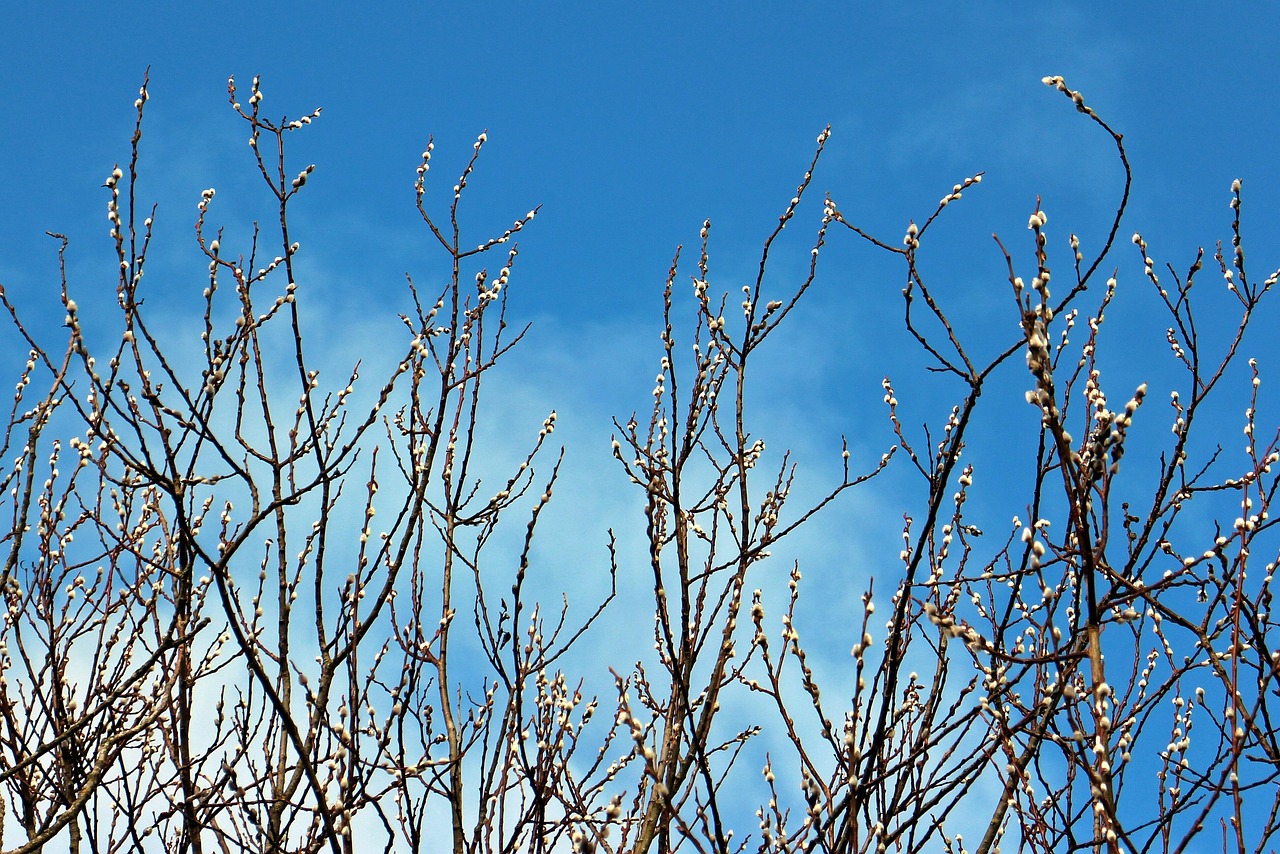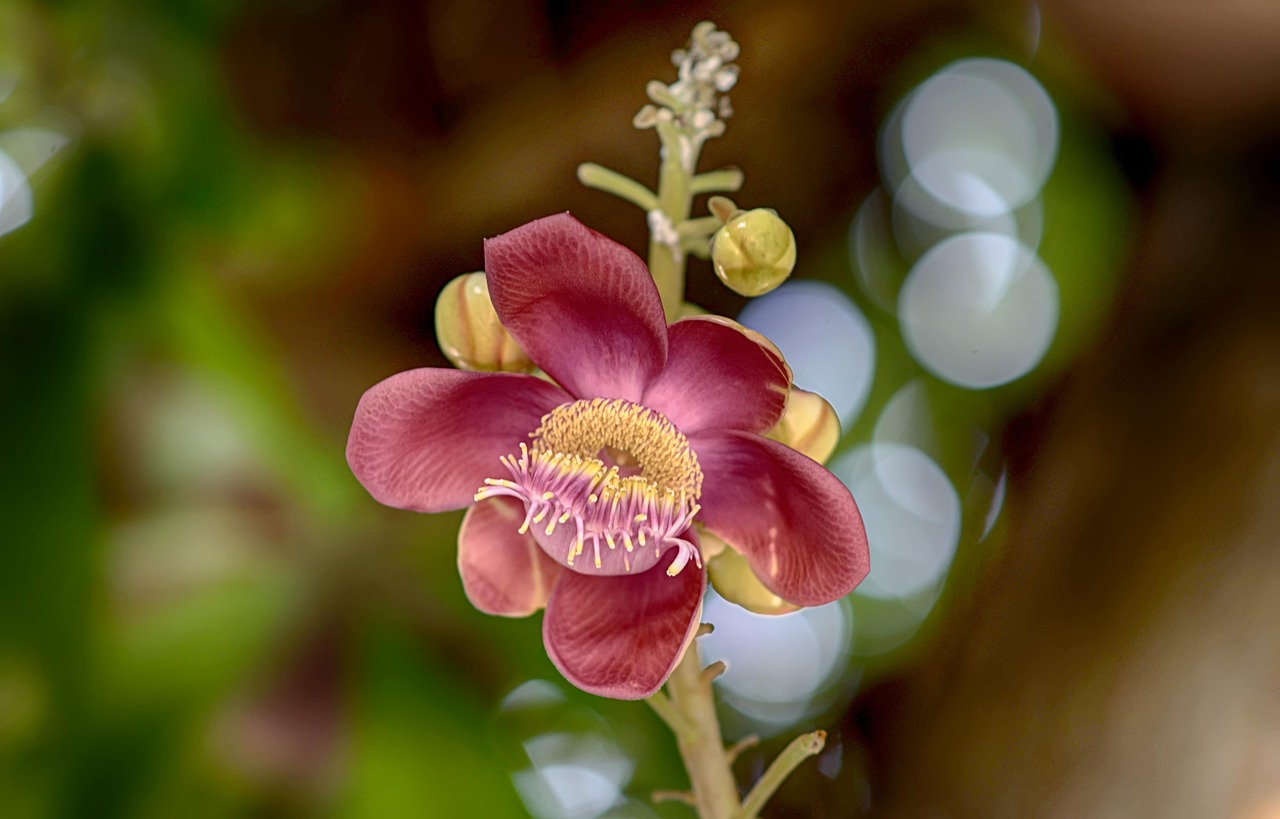The Sal tree, known scientifically as Shorea robusta, exhibits a moderate growth rate, typically reaching maturity in 30 to 40 years. It plays a vital role in sacred forests, providing ecological balance and cultural significance, especially in Hindu and Buddhist traditions.
Understanding the Sal Tree
The Sal tree is native to the tropical regions of South Asia, particularly found in India, Nepal, and Bangladesh. It thrives in moist, deciduous forests and can grow up to 50 meters tall. The tree is renowned for its sturdy hardwood, which is highly valued in construction and furniture making. Furthermore, the Sal tree holds immense cultural significance in many communities, often considered sacred.

Sal trees are essential components of their ecosystems. They provide habitat and sustenance for various wildlife species. The leaves serve as food for herbivores, while the flowers attract numerous pollinators. The fruits of the Sal tree are also consumed by birds and other animals, contributing to the food web within these forests.
Growth Rate of the Sal Tree
The growth rate of the Sal tree can vary based on several environmental factors, including soil quality, rainfall, and sunlight exposure. Under optimal conditions, the Sal tree can grow approximately 1 to 1.5 meters each year. This growth rate allows it to reach heights suitable for timber production within a few decades.
Factors Influencing Growth Rate
Several key factors influence the growth rate of Sal trees:

- Soil Quality: Well-drained, loamy soils rich in organic matter promote healthy growth.
- Rainfall: Adequate rainfall during the monsoon season is crucial for growth.
- Sunlight: Full sunlight exposure enhances photosynthesis and growth rates.
- Competition: The presence of other plants can affect the availability of resources.
Growth Stages
The growth of Sal trees can be divided into several stages:
- Seed Germination: The lifecycle begins when seeds germinate in a favorable environment.
- Seedling Stage: Young seedlings require protection from herbivores and harsh weather.
- Juvenile Stage: During this stage, trees grow rapidly and establish their root systems.
- Mature Stage: After 30 to 40 years, Sal trees reach maturity and can reproduce.
Cultural Significance of Sal Trees in Sacred Forests
In many cultures, particularly in India and Nepal, Sal trees are revered and protected. They are often found in sacred groves and forest areas that are integral to local spiritual practices. These sacred forests not only serve as places of worship but also as sanctuaries for biodiversity.
The role of Sal trees in these sacred spaces includes:

- Spiritual Significance: Many communities believe that Sal trees are home to deities or spirits.
- Biodiversity Conservation: Sacred forests help preserve various plant and animal species.
- Cultural Heritage: These forests are often sites for traditional rituals and ceremonies.
Ecological Role
The ecological importance of Sal trees extends beyond their growth rate. They contribute to soil conservation, reduce erosion, and play a crucial role in maintaining the water cycle within their ecosystems. Their extensive root systems help stabilize the soil, which is particularly beneficial in areas prone to landslides.
Moreover, Sal trees improve soil fertility through leaf litter decomposition. This process enriches the soil with nutrients, facilitating the growth of other plant species. The diversity supported by Sal trees fosters a balanced ecosystem that benefits both flora and fauna.
Conclusion of Section One
This section has highlighted the growth rate of Sal trees and their significant roles within sacred forests. The journey of a Sal tree from seed to maturity involves various stages influenced by environmental factors. Furthermore, their cultural importance emphasizes the need for conservation efforts to protect these vital ecosystems.

Sal Tree Ecological Benefits
Sal trees provide numerous ecological benefits beyond their role in sacred forests. These trees contribute significantly to the environment, supporting various ecosystems and enhancing biodiversity. Understanding these benefits helps us appreciate the vital role Sal trees play in their habitats.
Soil Conservation and Erosion Control
One of the primary ecological benefits of Sal trees is their ability to prevent soil erosion. Their robust root systems anchor the soil, reducing the risk of landslides and maintaining soil structure. The following points highlight the importance of Sal trees in soil conservation:
- Root Systems: The extensive root networks of Sal trees penetrate deep into the soil, providing stability and preventing erosion.
- Water Absorption: Sal trees enhance water infiltration, reducing surface runoff and promoting groundwater recharge.
- Nutrient Retention: The organic matter from fallen leaves improves soil fertility, helping to retain essential nutrients.
Biodiversity Support
Sal trees are key players in promoting biodiversity within their ecosystems. They serve as habitats for various species, creating a rich and diverse environment:
- Flora: Sal forests are home to a variety of plant species that thrive in the shade provided by mature trees.
- Fauna: These forests support numerous animal species, including birds, insects, and mammals that rely on Sal trees for food and shelter.
- Pollination: The flowers of Sal trees attract pollinators, which are crucial for the reproduction of many plant species.
Water Cycle Regulation
Sal trees play a significant role in regulating the water cycle within their ecosystems. Their presence contributes to various hydrological processes:
- Transpiration: Sal trees release water vapor through transpiration, which helps maintain humidity levels in the surrounding environment.
- Rainfall Influence: The canopy of Sal forests can influence local rainfall patterns, promoting precipitation in nearby areas.
- Stream Flow Maintenance: By stabilizing the soil and reducing runoff, Sal trees help maintain consistent stream flows during dry periods.
Cultural Practices Surrounding Sal Trees
The cultural significance of Sal trees extends beyond their ecological roles. Many communities have developed various practices and traditions that revolve around these trees. Understanding these cultural practices provides insight into the deep connections between people and nature.
Traditional Uses
Sal trees have been utilized by local communities for various purposes:
- Lumber Production: The hardwood of the Sal tree is highly valued for its durability, making it ideal for construction and furniture.
- Medicinal Uses: Parts of the Sal tree, including its bark and leaves, are used in traditional medicine for treating various ailments.
- Fuel Source: Fallen branches and leaves can be used as firewood, providing energy for cooking and heating.
Cultural Rituals and Festivals
In many regions, Sal trees hold a special place in local customs and rituals:
- Sacred Groves: Many communities establish sacred groves around Sal trees, preserving them as sites for worship and spiritual practices.
- Festivals: Certain festivals celebrate the Sal tree, where people engage in rituals to honor nature and seek blessings.
- Ceremonial Offerings: Offerings are often made at the base of these trees during religious ceremonies, symbolizing respect for nature.
Threats to Sal Trees and Their Ecosystems
Despite their ecological and cultural importance, Sal trees face several threats that jeopardize their survival. Recognizing these threats is crucial for conservation efforts:
Deforestation
The clearing of forests for agriculture, urban development, and logging poses a significant threat to Sal trees. Deforestation leads to habitat loss and disrupts local ecosystems. The following factors contribute to deforestation:
- Agricultural Expansion: Increasing demand for agricultural land results in the clearance of forests.
- Illegal Logging: Unsustainable logging practices can lead to the depletion of Sal tree populations.
- Urbanization: Expanding cities encroach on forest lands, further diminishing available habitats.
Pests and Diseases
Pests and diseases can also threaten the health of Sal trees. Outbreaks can lead to significant losses in tree populations, impacting both biodiversity and local economies. Identifying and managing these threats is essential for maintaining healthy Sal forests.
This section has elaborated on the ecological benefits of Sal trees, their cultural significance, and the threats they face. Understanding these aspects is vital for fostering appreciation and support for conservation initiatives aimed at protecting these important trees and their ecosystems.
Conservation Efforts for Sal Trees
Given the ecological and cultural importance of Sal trees, various conservation efforts are underway to protect these vital resources. These initiatives aim to address the threats posed by deforestation, pests, and climate change. Understanding the different approaches helps highlight the significance of preserving Sal tree populations and their ecosystems.
Community Involvement in Conservation
Community engagement is crucial in conservation efforts. Local communities often have a deep understanding of their environment and can play an active role in protecting Sal trees. Some effective strategies include:
- Awareness Programs: Educating local populations about the benefits of Sal trees and the importance of preserving them can foster a sense of responsibility.
- Sustainable Practices: Encouraging sustainable harvesting methods ensures that Sal trees are not overexploited while still providing resources for local communities.
- Community Forest Management: Empowering communities to manage forest resources allows them to protect Sal trees while benefiting from their use.
Government Initiatives
Governments play a pivotal role in conservation efforts through policies and regulations. Some of the key initiatives include:
- Protected Areas: Establishing national parks and wildlife reserves helps safeguard Sal forests from exploitation and development.
- Reforestation Programs: Initiatives aimed at replanting Sal trees in degraded areas can restore ecosystems and promote biodiversity.
- Legislation: Implementing laws to prevent illegal logging and protect endangered tree species ensures long-term sustainability.
The Role of NGOs in Conservation
Non-governmental organizations (NGOs) are instrumental in promoting conservation efforts for Sal trees. They often work on the ground to implement projects that benefit both the environment and local communities. Key roles played by NGOs include:
- Research and Data Collection: NGOs conduct studies to assess the health of Sal forests and monitor biodiversity, providing valuable information for conservation strategies.
- Funding and Resources: Many NGOs provide financial support for conservation projects, enabling local communities to implement sustainable practices.
- Advocacy: NGOs often advocate for policies that protect Sal trees and their habitats, raising awareness about the importance of these ecosystems.
Restoration Projects
Restoration projects aim to rehabilitate areas that have suffered from deforestation or degradation. These projects can take various forms:
- Replanting Native Species: Reintroducing Sal trees along with other native plants helps restore ecological balance.
- Soil Improvement Techniques: Implementing agroforestry practices can enhance soil quality, making it more conducive for tree growth.
- Monitoring and Maintenance: Continuous monitoring of restored areas ensures that young trees thrive and ecosystems recover effectively.
The Impact of Climate Change on Sal Trees
Climate change poses a significant threat to Sal trees and their ecosystems. Changes in temperature and precipitation patterns can affect their growth rates and survival. Understanding these impacts is essential for developing effective conservation strategies.
Effects of Climate Change
The following factors illustrate how climate change can impact Sal trees:
- Drought Conditions: Increased temperatures may lead to prolonged dry spells, affecting the water availability necessary for growth.
- Pest Outbreaks: Warmer climates can result in increased pest populations, potentially leading to more significant threats to tree health.
- Altered Growth Patterns: Changes in seasonal weather patterns can disrupt the natural growth cycles of Sal trees, impacting their reproductive success.
Adaptation Strategies
To mitigate the effects of climate change on Sal trees, several adaptation strategies can be employed:
- Diverse Planting: Planting a variety of tree species alongside Sal trees can enhance resilience against climate-related changes.
- Water Management: Implementing efficient water management practices can help ensure that Sal trees receive adequate moisture even during droughts.
- Research and Monitoring: Ongoing research into the effects of climate change on forest ecosystems will inform future conservation efforts and strategies.
This section has discussed various conservation efforts aimed at protecting Sal trees, including community involvement, government initiatives, and NGO roles. Additionally, it has highlighted the effects of climate change on Sal trees and potential adaptation strategies to mitigate these impacts. Understanding these elements is crucial for ensuring the long-term survival of Sal trees and their associated ecosystems.
Future Research Directions
As the understanding of Sal trees and their ecosystems continues to evolve, future research directions will play a crucial role in ensuring their survival. By focusing on specific areas, researchers can provide valuable insights that will inform conservation strategies and sustainable management practices.
Genetic Diversity Studies
One of the key areas for research involves examining the genetic diversity of Sal tree populations. Understanding the genetic makeup can help in:
- Conservation Planning: Identifying genetically diverse populations can guide conservation efforts, ensuring that various genetic traits are preserved.
- Resilience Against Diseases: Genetic studies can reveal how different Sal tree varieties respond to pests and diseases, informing breeding programs.
- Climate Adaptation: Researching genetic adaptability to environmental changes can assist in selecting trees for reforestation projects.
Ecological Interactions
Investigating the ecological interactions within Sal forest ecosystems is another important area of research. Key focus areas include:
- Plant-Pollinator Relationships: Understanding these relationships can enhance knowledge about the reproductive success of Sal trees and other flora.
- Soil Microbial Communities: Research on how Sal trees interact with soil microbes can uncover essential nutrient cycling processes.
- Wildlife Interdependencies: Examining how wildlife species depend on Sal trees for food and habitat will help in conserving biodiversity.
Community Awareness and Education
Raising awareness about the importance of Sal trees and their ecosystems is vital for conservation efforts. Educational initiatives can foster a connection between local communities and their natural environment. Effective strategies include:
- Workshops and Seminars: Organizing events to educate community members about sustainable practices and the ecological roles of Sal trees can inspire action.
- School Programs: Integrating environmental education into school curriculums promotes an early understanding of conservation issues.
- Partnerships with Local Leaders: Collaborating with respected community leaders can help spread awareness and encourage community-driven conservation projects.
Conclusion
The Sal tree, with its moderate growth rate and profound significance in sacred forests, serves as a cornerstone of both ecological health and cultural heritage. Its contributions to biodiversity, soil conservation, and the water cycle underscore its importance in maintaining balanced ecosystems. However, the threats posed by deforestation, climate change, and pests necessitate urgent conservation efforts.
Through community involvement, government initiatives, and NGO support, it is possible to protect and preserve Sal trees for future generations. Continued research into genetic diversity, ecological interactions, and effective conservation strategies will enhance our understanding and management of these vital trees. Raising awareness within local communities further strengthens the bond between people and nature, promoting sustainable practices that ensure the longevity of Sal trees.
Ultimately, the future of Sal trees lies in a collective effort to recognize their value and implement strategies that prioritize their protection. By committing to conservation initiatives, we can secure the ecological and cultural legacy of these magnificent trees for years to come.
